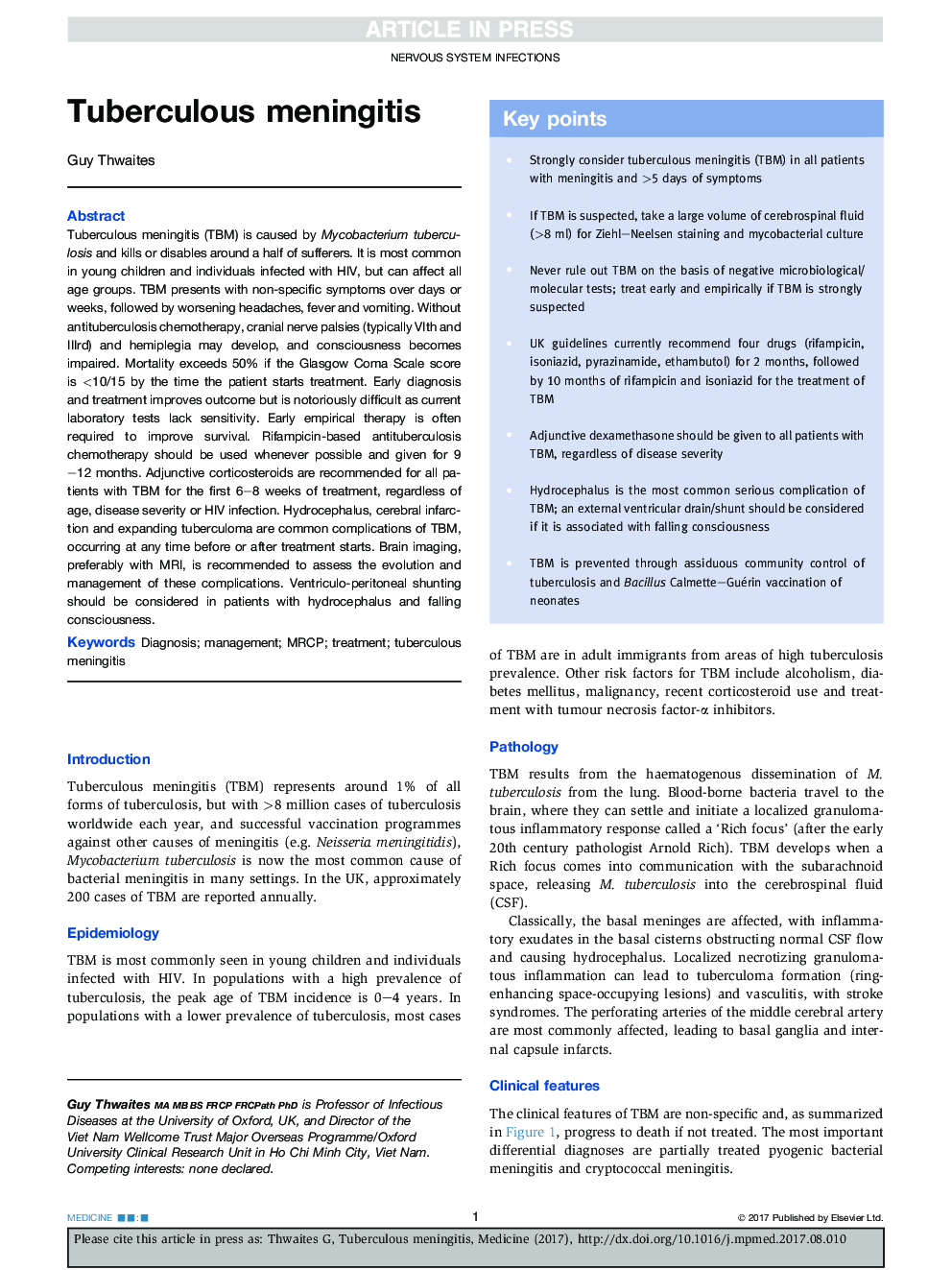| کد مقاله | کد نشریه | سال انتشار | مقاله انگلیسی | نسخه تمام متن |
|---|---|---|---|---|
| 8764160 | 1597470 | 2017 | 4 صفحه PDF | دانلود رایگان |
عنوان انگلیسی مقاله ISI
Tuberculous meningitis
ترجمه فارسی عنوان
مننژیت سل ریوی
دانلود مقاله + سفارش ترجمه
دانلود مقاله ISI انگلیسی
رایگان برای ایرانیان
کلمات کلیدی
موضوعات مرتبط
علوم پزشکی و سلامت
پزشکی و دندانپزشکی
پزشکی و دندانپزشکی (عمومی)
چکیده انگلیسی
Tuberculous meningitis (TBM) is caused by Mycobacterium tuberculosis and kills or disables around a half of sufferers. It is most common in young children and individuals infected with HIV, but can affect all age groups. TBM presents with non-specific symptoms over days or weeks, followed by worsening headaches, fever and vomiting. Without antituberculosis chemotherapy, cranial nerve palsies (typically VIth and IIIrd) and hemiplegia may develop, and consciousness becomes impaired. Mortality exceeds 50% if the Glasgow Coma Scale score is <10/15 by the time the patient starts treatment. Early diagnosis and treatment improves outcome but is notoriously difficult as current laboratory tests lack sensitivity. Early empirical therapy is often required to improve survival. Rifampicin-based antituberculosis chemotherapy should be used whenever possible and given for 9-12 months. Adjunctive corticosteroids are recommended for all patients with TBM for the first 6-8 weeks of treatment, regardless of age, disease severity or HIV infection. Hydrocephalus, cerebral infarction and expanding tuberculoma are common complications of TBM, occurring at any time before or after treatment starts. Brain imaging, preferably with MRI, is recommended to assess the evolution and management of these complications. Ventriculo-peritoneal shunting should be considered in patients with hydrocephalus and falling consciousness.
ناشر
Database: Elsevier - ScienceDirect (ساینس دایرکت)
Journal: Medicine - Volume 45, Issue 11, November 2017, Pages 670-673
Journal: Medicine - Volume 45, Issue 11, November 2017, Pages 670-673
نویسندگان
Guy Thwaites,
